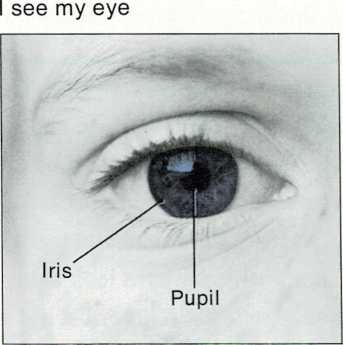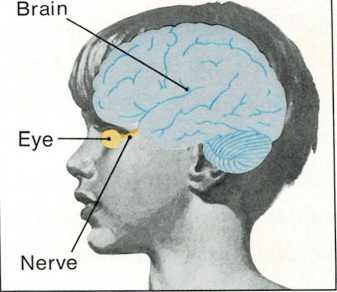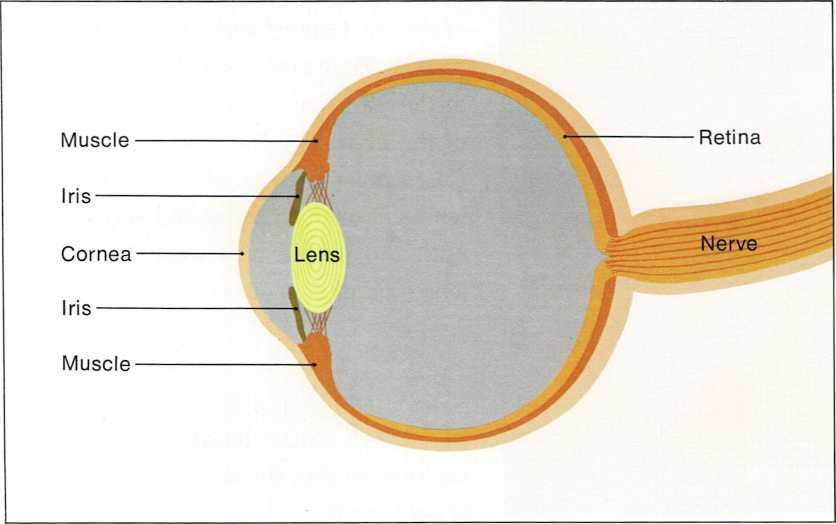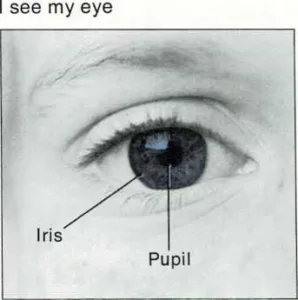Inside my eye
My eyes and my brain work together. Here’s how.

When I look at a thing, the light that bounces off of it enters my eye
through a clear covering called the cornea. The light touches nerves at
the back of the eye. The nerves send messages about the light to my
brain. When my brain gets the messages, I know I’m seeing something.
The colored circle in my eye is the iris. In the center of the iris is a
dark spot called the pupil. The pupil is the hole that lets light into
my eye.
Muscles in the iris make the pupil bigger or smaller to let in more or
less light. The darker a place, the larger my pupil gets. The brighter a
place, the smaller my pupil gets.
Behind the pupil is the lens. The lens is clear. Light passes through
it.
The inside of my eye is filled with clear liquid that is a little like
jelly. Light passes through that, too. The light touches the back of my
eye where the tiny nerves are.
These nerves send their messages to a big nerve. The messages travel
along the big nerve to my brain. My brain understands them. I see. And I
know that I
see.
One of my eyes

There are more than a hundred thousand nerves in my retina. Light
touches the nerves, and the nerves send messages about the light to my
brain.
Inside my eyeball


